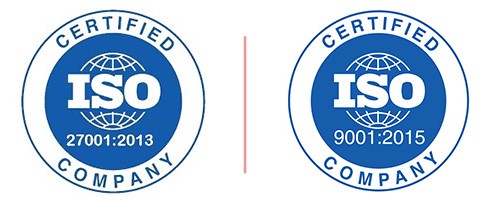- +81-5050505761
- [email protected]
The global hyperscale data center market size was US$ 80.23 billion in 2021. The global hyperscale data center market size is forecast to reach US$ 564.2 billion by 2030, growing at a compound annual growth rate (CAGR) of 24.2% during the forecast period from 2022 to 2030.
A hyperscale data center provides a single, universally scalable computer architecture. The architecture consists of a collection of small servers or nodes that provide storage solutions, networking, and computing. In order to run a hyperscale data center efficiently, it is necessary to start small, adding more nodes as the demand grows, which helps in keeping the initial costs down. This architecture is also compatible with the existing architecture of an organization.
Factors Influencing Market Growth
Impact Analysis of COVID-19
Due to the recent outbreak of COVID-19 worldwide, the data center market is bifurcating with strong spending by hyperscale companies and cloud platforms, compared to the slowdown in spending by many enterprise users. Large cloud markets were the focus of pandemic-driven leasing activity. COVID-19 also affected this market, as there was a disruption in the supply chain of many of the key components required for building architecture, such as fiber optics, batteries, racks, etc.
Regional Insights
North America region leads the global hyperscale data center market in terms of market share. The region is the biggest user of cloud-based services. High investment in R&D and lower operating costs are also factors driving the demand for the hyperscale data center market in this region.
Asia-Pacific is the region with the highest growth rate in this market. The hyperscale data center market is forecast to grow due to growing demand for cloud services from small, medium, and large enterprises and increased adoption of hyperscale data center architecture and technologies by various sectors.
Leading Competitors
The leading prominent companies profiled in the global hyperscale data center market are:
Scope of the Report
The global hyperscale data center market segmentation focuses on Component, User Type, Industry Vertical, and Region.
Segmentation based on Component
Segmentation based on User Type
Segmentation based on Industry Vertical
Segmentation based on Region
[TABLE OF CONTENTS]
1 INTRODUCTION OF GLOBAL HYPERSCALE DATA CENTER MARKET
1.1 OVERVIEW OF THE MARKET
1.2 SCOPE OF REPORT
1.3 ASSUMPTIONS
2 EXECUTIVE SUMMARY
3 RESEARCH METHODOLOGY
3.1 DATA MINING
3.2 VALIDATION
3.3 PRIMARY INTERVIEWS
3.4 LIST OF DATA SOURCES
4 GLOBAL HYPERSCALE DATA CENTER MARKET OUTLOOK
4.1 OVERVIEW
4.2 MARKET DYNAMICS
4.2.1 DRIVERS
4.2.2 RESTRAINTS
4.2.3 OPPORTUNITIES
4.3 PORTERS FIVE FORCE MODEL
4.4 VALUE CHAIN ANALYSIS
5 GLOBAL HYPERSCALE DATA CENTER MARKET, BY COMPONENT
5.1 OVERVIEW
5.2 SERVER
5.3 NETWORKING
6 GLOBAL HYPERSCALE DATA CENTER MARKET, BY USER TYPE
6.1 OVERVIEW
6.2 CLOUD PROVIDERS
6.3 COLOCATION PROVIDERS
6.4 ENTERPRISES
7 GLOBAL HYPERSCALE DATA CENTER MARKET, BY INDUSTRY VERTICAL
7.1 OVERVIEW
7.2 IT
7.3 BFSI
7.4 GOVERNEMENT UTILITIES
7.5 HEALTHCARE
7.6 ENERGY
7.7 MANUFACTURING
7.8 OTHERS (EDUCATION & RETAIL)
8 GLOBAL HYPERSCALE DATA CENTER MARKET, BY GEOGRAPHY
8.1 OVERVIEW
8.2 NORTH AMERICA
8.2.1 NORTH AMERICA MARKET SNAPSHOT
8.2.2 U.S.
8.2.3 CANADA
8.2.4 MEXICO
8.3 EUROPE
8.3.1 EUROPE MARKET SNAPSHOT
8.3.2 WESTERN EUROPE
8.3.2.1 THE UK
8.3.2.2 GERMANY
8.3.2.3 FRANCE
8.3.2.4 ITALY
8.3.2.5 SPAIN
8.3.2.6 REST OF WESTERN EUROPE
8.3.3 EASTERN EUROPE
8.3.3. 1 POLAND
8.3.3.2 RUSSIA
8.3.3.3 REST OF EASTERN EUROPE
8.4 ASIA PACIFIC
8.4.1 ASIA PACIFIC MARKET SNAPSHOT
8.4.2 CHINA
8.4.3 JAPAN
8.4.4 INDIA
8.4.5 AUSTRALIA & NEW ZEALAND
8.4.6 ASEAN
8.4.7 REST OF ASIA PACIFIC
8.5 MIDDLE EAST & AFRICA
8.5.1 MIDDLE EAST & AFRICA MARKET SNAPSHOT
8.5.2 UAE
8.5.3 SAUDI ARABIA
8.5.4 SOUTH AFRICA
8.5.5 REST OF MEA
8.6 SOUTH AMERICA
8.6.1 SOUTH AMERICA MARKET SNAPSHOT
8.6.2 BRAZIL
8.6.3 ARGENTINA
8.6.4 REST OF SOUTH AMERICA
9 GLOBAL DATA LAKE MARKET COMPETITIVE LANDSCAPE
9.1 OVERVIEW
9.2 COMPANY MARKET RANKING
9.3 KEY DEVELOPMENT STRATEGIES
10 COMPANY PROFILES
10.1 INTEL CORPORATION
10.1.1 OVERVIEW
10.1.2 FINANCIAL PERFORMANCE
10.1.3 PRODUCT OUTLOOK
10.1.4 KEY DEVELOPMENTS
10.2 NLYTE SOFTWARE
10.2.1 OVERVIEW
10.2.2 FINANCIAL PERFORMANCE
10.2.3 PRODUCT OUTLOOK
10.2.4 KEY DEVELOPMENTS
10.3 SANDISK CORPORATION
10.3.1 OVERVIEW
10.3.2 FINANCIAL PERFORMANCE
10.3.3 PRODUCT OUTLOOK
10.3.4 KEY DEVELOPMENTS
10.4 AVAGO TECHNOLOGIES
10.4.1 OVERVIEW
10.4.2 FINANCIAL PERFORMANCE
10.4.3 PRODUCT OUTLOOK
10.4.4 KEY DEVELOPMENTS
10.5 CISCO SYSTEMS, INCORPORATED
10.5.1 OVERVIEW
10.5.2 FINANCIAL PERFORMANCE
10.5.3 PRODUCT OUTLOOK
10.5.4 KEY DEVELOPMENTS
10.6 HEWLETT-PACKARD
10.6.1 OVERVIEW
10.6.2 FINANCIAL PERFORMANCE
10.6.3 PRODUCT OUTLOOK
10.6.4 KEY DEVELOPMENTS
10.7 ERICSSON
10.7.1 OVERVIEW
10.7.2 FINANCIAL PERFORMANCE
10.7.3 PRODUCT OUTLOOK
10.7.4 KEY DEVELOPMENTS
10.8 CAVIUM, INCORPORATED
10.8.1 OVERVIEW
10.8.2 FINANCIAL PERFORMANCE
10.8.3 PRODUCT OUTLOOK
10.8.4 KEY DEVELOPMENTS
10.9 INTERNATIONAL BUSINESS MACHINES CORPORATION
10.9.1 OVERVIEW
10.9.2 FINANCIAL PERFORMANCE
10.9.3 PRODUCT OUTLOOK
10.9.4 KEY DEVELOPMENTS
10.10 MELLANOX TECHNOLOGIES, INCORPORATED
10.10.1 OVERVIEW
10.10.2 FINANCIAL PERFORMANCE
10.10.3 PRODUCT OUTLOOK
10.10.4 KEY DEVELOPMENTS
01
お客様のニーズに合わせてレポートをカスタマイズ可能
02
ベテランの市場調査員による専門的な分析
03
安全で簡単に利用できるオンライン決済方法
04
お客様のご要望に応じて、特定の章を購入することができます。
05
すべてのレポートに専門的な日本語翻訳を提供
06
包括的でわかりやすいレポートを迅速にお届けします。
07
購入後も継続的なサポートとアップデートが受けられます。

We Accept

Copyright ©2022 All rights reserved